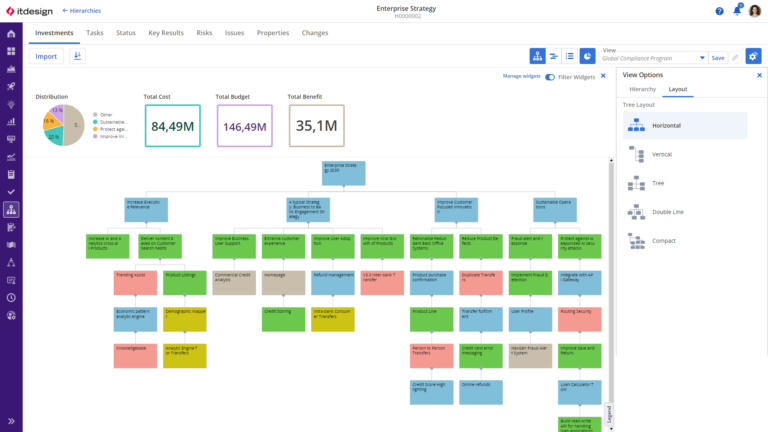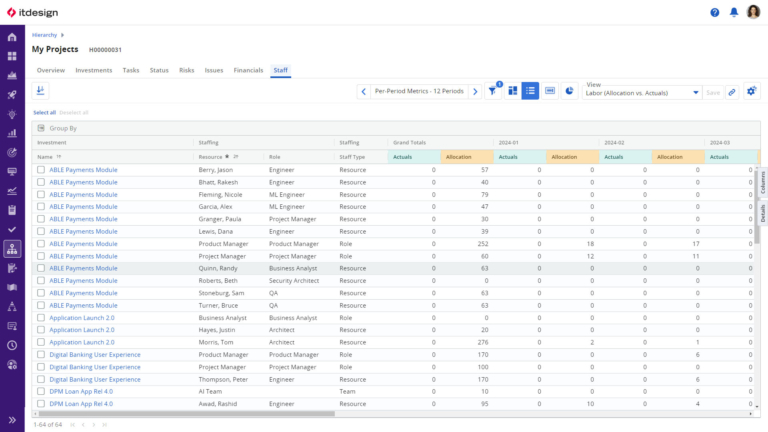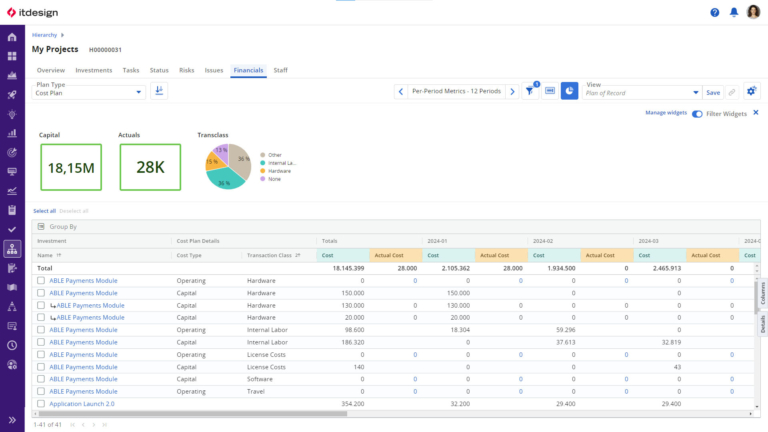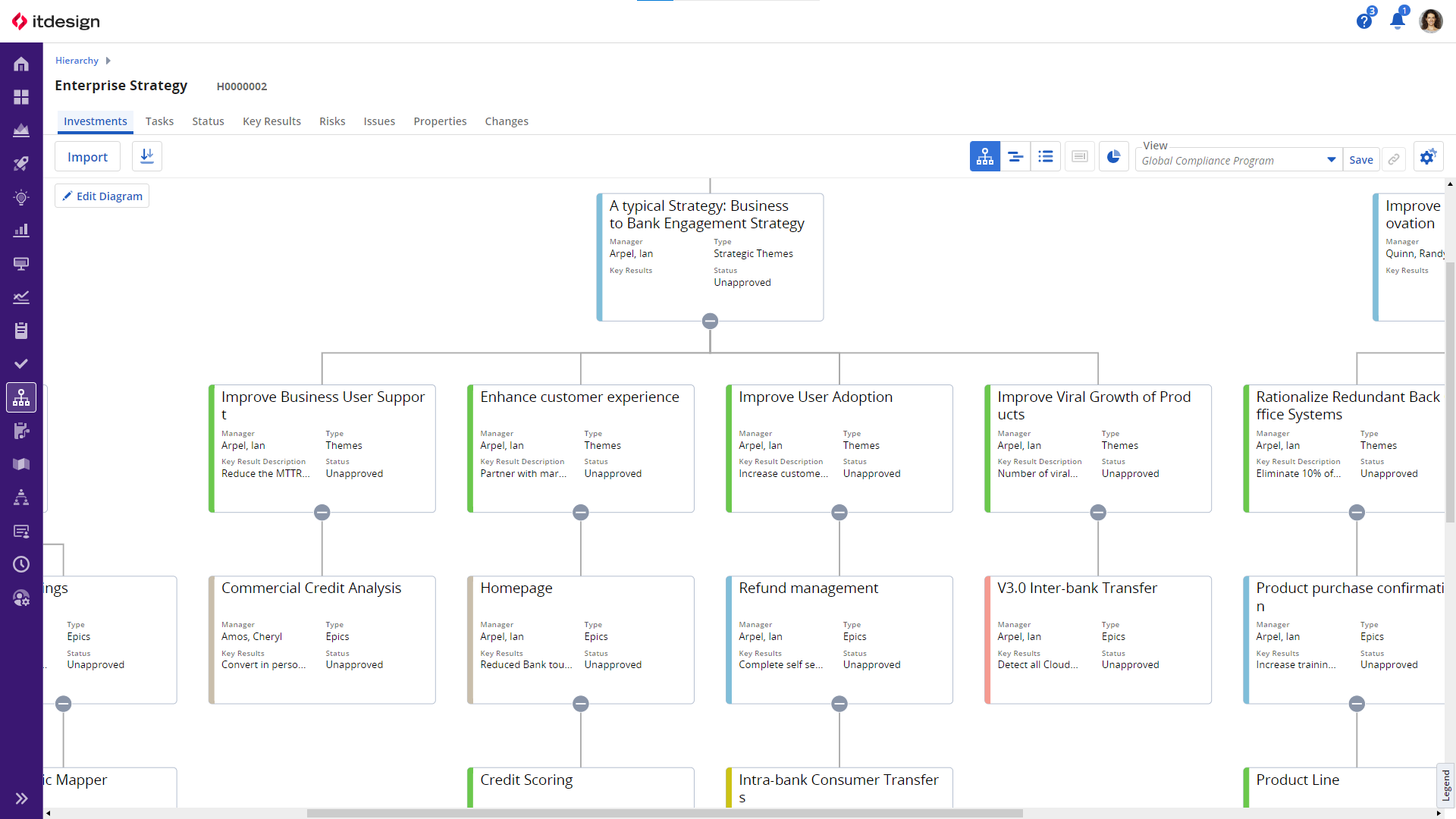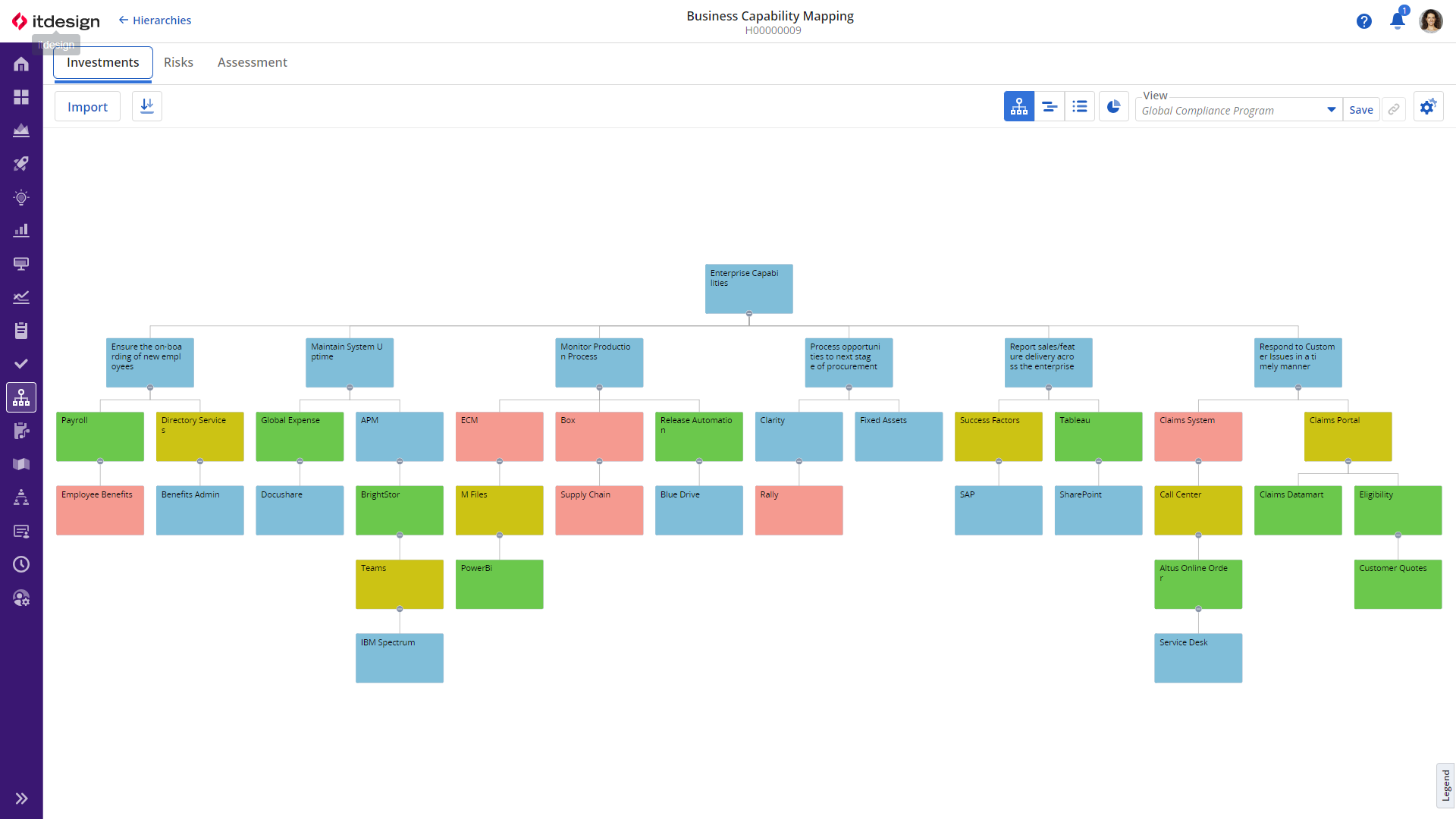How can our corporate strategy be implemented in the individual areas of the organization? Are we staying in budget? Which subprojects are required for the next product release? When we look at larger projects from a bird’s eye view, it can be difficult to keep an eye on all the factors critical to success. Similarly, it can also be challenging to not lose track of the bigger picture when we are confronted with a multitude of subprojects and tasks in our everyday lives.
A simple but effective method to keep track of them is to represent the entire project or portfolio as a hierarchy. There are ways to implement this, such as, for example, using project and portfolio management software, such as Clarity from Broadcom.


